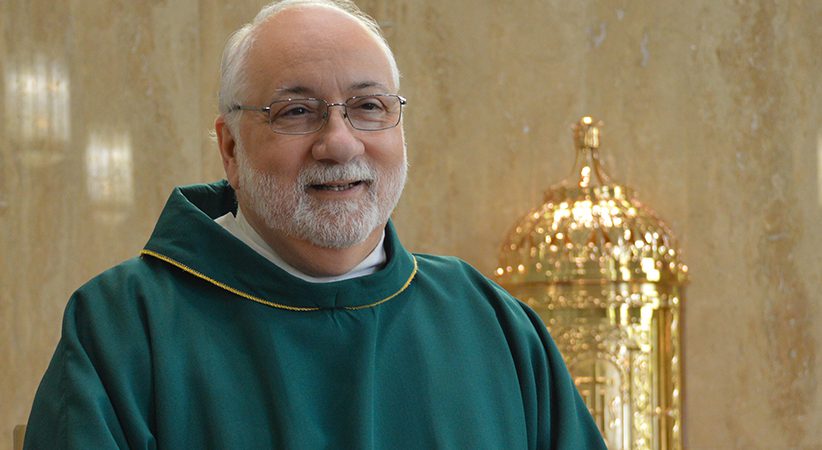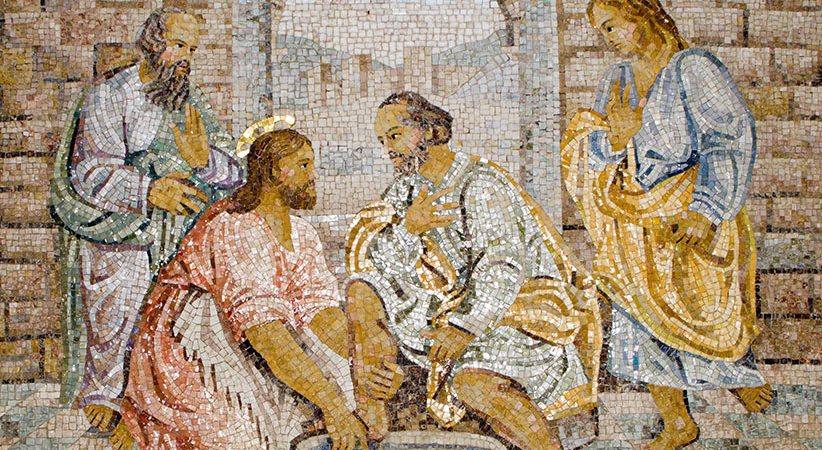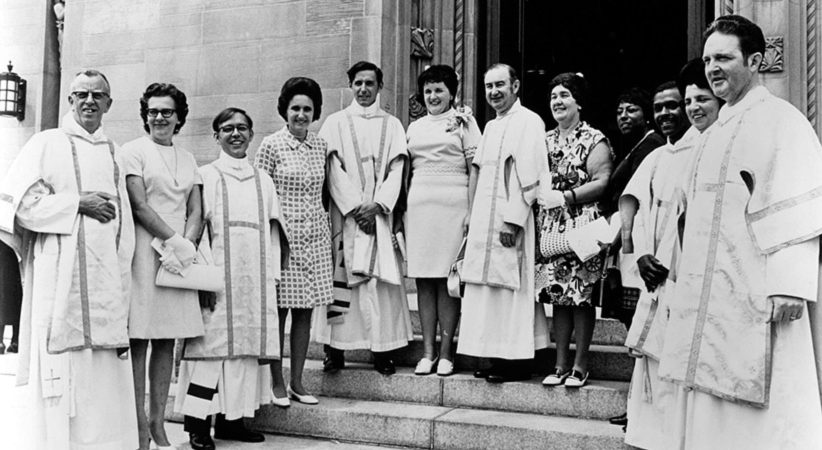‘Story of a Soul’
Thérèse of Lisieux: A spiritual classic book review
Deacon Anthony J. Clishem Comments Off on ‘Story of a Soul’
Between the calling of the First Vatican Council (1869) and Second Vatican Council (1962), two apparently unrelated movements of the Holy Spirit resonated simultaneously within the Church: the first, the call to restore the ancient order of permanent deacons; the second, the growing popular devotion to an obscure French nun, Thérèse of Lisieux.
The roots of the permanent diaconate extend to the earliest days of the Church, whereas Thérèse of Lisieux (1873-97) broke into Church consciousness in the early 20th century. She did so with such inexplicable suddenness that, before his death in 1914, Pope St. Pius X would refer to her, both privately and prophetically, as “the greatest saint of modern times,” as the preface of the edition under review here says (cf. p. 15). Could it be that the intersection of these two movements, the origin of one ancient and of the other modern, had helped set the stage for a renewal in the Church that continues to the present day? A fresh look at “Story of a Soul,” the autobiography of St. Thérèse, provides a means by which to examine this question with renewed interest and relevance for our times.
“Story of a Soul” (OSV, $29.95) draws one not only into the unique events and circumstances of a remarkable person, but also, as the title suggests, into the hidden, spiritual life of a saintly soul. Writing not for popular consumption but at the behest of religious superiors, Sister Thérèse recounts her story with remarkable transparency. And yet, the lessons she derives from retelling her spiritual journey — particularly her teachings on charity — so astonish the reader with their freshness and insight, that, exactly 100 years after her death, Pope John Paul II would declare her the youngest Doctor of the Church.
Her Story Is Published
The Carmel of Lisieux released the first version of the autobiography on the one-year anniversary of Thérèse’s passing, primarily for the benefit of the Carmelite order. Soon, word of the book spread, along with many accounts of miraculous favors attributed to her intercession. In actuality, the initial release, and every subsequent edited version, provided an amalgamation of “three different manuscripts, addressed to three different persons, during three different years,” writes translator John Clarke, OCD, in the Introduction to “Story of a Soul: The Autobiography of St. Thérèse of Lisieux (the Little Flower) [The Authorized English Translation of Thérèse’s Original Unaltered Manuscripts]” (ICS Publications, $13.95).
The book title comes from the opening sentence of the first manuscript written in 1895. Addressing it to Sister Agnes of Jesus, known to Thérèse both as prioress and Pauline, her older sister, she writes, “It is to you, dear Mother, that I am about to confide the story of my soul” (p. 3). Sister Thérèse took a year to write the account of her childhood and youth, from her first recollection “of loving smiles and tender caresses’’ (p. 28) to the day of making her final profession, of which moment she writes, “oceans of grace … flooded my soul” (p. 132).
In between, Thérèse experienced the storms of life that only one with a “naturally sensitive” heart (cf. p. 120) would know. Her childhood trials included the death of her mother when she Thérèse was only four years old, and at nine abandonment felt by the loss of Pauline to religious life. Of these times, she writes, “Life spread out before me as it really is, full of sufferings and frequent partings” (p. 32). At the age of 10, Thérèse became extraordinarily ill, both physically and psychologically, in a condition marked by exhaustion, delirium and hallucinations. For long periods of time, her condition rendered her both bedridden and incapacitated.
But her trials were also met with miraculous graces. On May 10, 1883, Thérèse attributed her cure of the same illness to the Blessed Virgin: as her father and sisters prayed desperately at her bedside, she saw a statue of Our Lady of Victory “come to life” (p. 37). Another supernatural favor was granted on Dec. 25, 1886 — when disappointment became the occasion for grace.
She recalls how “Papa” had forgotten the annual Christmas tradition of hiding gifts inside of shoes by the fireplace. Yet this great disappointment turned into immense gratitude for the gift of salvation. Calling it “the grace of complete conversion” (p. 53), Thérèse explains how Jesus “accomplished the work I had not been able to do during all these years’’ (p. 54). In that instant, the Lord transported Thérèse from Christmas to Good Friday to Pentecost giving her “a burning zeal hitherto unknown” (p. 55). She recounts it this way: “I felt myself consumed with thirst for souls, and I longed at any cost to snatch sinners from the everlasting flames of Hell” (p. 55). In this singular moment of grace, Thérèse becomes an apostle for Christ.
‘History of Her Vocation’
Thérèse refers to her first manuscript narrative as the “history of her vocation” (p. 65). This includes her unusual but single-minded petition to enter religious life at the early age of 15 (and incorporates her passionate plea at the feet of Pope Leo XIII to grant her request). In a more thematic way, Thérèse takes up the story of her vocation in response to a more urgent request for a second manuscript. This comes from her biological sister, Marie (Sister Marie of the Sacred Heart), who had learned of Thérèse’s telltale symptoms: a cough and the occasional gurgle of blood that would stream down her lips. While on a three-day retreat, Thérèse hurriedly composes the text of her second manuscript dedicated to her “little doctrine.”
The account is also theological. She describes her struggle to discover her vocation while reading St. Paul’s treatise on the Mystical Body of Christ (cf. 1 Cor 12:12-31). In a body with many distinct and necessary parts, she writes, “I could not recognize myself among any of its members” (p. 156). Pondering further, she adds, “Was it not rather that I wished to recognize myself in all” (p. 156)? Realizing in an instant that a body also needed a heart, she cries out in an ecstatic moment of insight, “O Jesus, my Love, at last I have found my vocation. … In the heart of the Church … I will be love!” (p. 156).
The Little (Diaconal) Way
Four months before Thérèse’s death, Sister Agnes informs the new superior that Thérèse’s previous writings contain little about her experiences of religious life. With that, in June 1897, a request came to her for a new, third manuscript. During these final weeks of her life, concurrent with her most intense suffering, both physical and spiritual, she writes of “a means of getting to heaven by … a little way that is wholly new” (pp. 112-13).
Herein lies not only the necessary antidote to the errors of modernism but also an anticipatory teaching of diaconal spirituality for a future, restored order. Describing her total embrace of this Little Way, she writes: “I will let no tiny sacrifice pass, no look, no word. I wish to profit by the smallest actions, and to do them for Love” (p. 158). Thérèse reveals to the reader — and in a particular way to the deacon — a way of sacrificial love. It is an obedient, childlike surrender of self, suffering servant for the sake of a loving Master, configuring one’s vocation to the One who calls, more a matter of being than of doing: “One cannot attain the end without adopting the means; and as Our Lord made me understand that it was by the Cross he would give me souls, [and] the more crosses I met with, the stronger grew my attraction to suffering” (p. 87).
Sister Thérèse of the Child Jesus died on Sept. 30, 1897, at the age of 24, in the same obscurity that enfolded her life as a cloistered nun. Just before her death, one sister remarked, “Sister Thérèse will not live long, and really sometimes I wonder what our Mother Prioress will find to say about her when she dies. … [She] has certainly never done anything worth speaking about” (p. 172).
Since its initial release, “Story of a Soul” has sold more than half a billion copies worldwide and has been read in more than 50 languages. The OSV edition renders a fuller portrait of the saint by including the Epilogue by Prioress Sister Agnes of Jesus, Counsels and Reminiscences of Sister Thérèse by other Carmelite sisters, Prayers of Sister Thérèse and Selected Poems.
DEACON ANTHONY CLISHEM, Ed.D., serves as the Office of Catechetical Formation leader for the Diocese of Joliet, in Illinois.
………………………………………………………………………………………………………………………………………………..
Pope Francis Devotion to St. Thérèse of Lisieux
Pope Francis’ apostolic exhortation C’est la Confiance, the opening line of which is, when translated from French to English, “It is confidence and nothing but confidence that must lead us to Love.” Francis speaks of Thérèse of Lisieux’s ordinary life, but the “extraordinary burst of light and love that she radiated came to be known soon after her death, with the publication of her writings and thanks to the countless graces bestowed on the faithful who invoked her intercession” (No. 5).
“The final pages of her ‘Story of a Soul’ are a missionary testament,” Francis notes. “They express her appreciation of the fact that evangelization takes place by attraction, not by pressure or proselytism” (No. 10).
…………………………………………………………………………………………………………………………………………………





